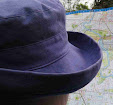Medals for national service returned
5 weeks ago
"12 Field Ambulance Stretcher bearers carrying through Poziere wood, the one at the back was killed later carrying with me, we had only just changed ends. Better born lucky than rich in France."
3219 Corporal George Lloyd MM (right) and two other unidentified stretcher bearers, one believed to be 3373 Private (Pte) Norman Henry Sadler MM (position unknown), of the 12th Field Ambulance carrying a wounded man.
12 Field Ambulance AIF
SADLER 3375 N E
Killed 20-8-16
Witness states that he was with Sadler when the latter was killed. They were carrying a stretcher with patient on it. A few yards before casualty happened, they changed ends. States that a shell burst in front of them when crossing a sap about 100 yards from Pozieres Cemetery. Piece of shell went through Sadler's helmet in front and came out at back of head. He was unconscious. Took him back to dressing station, where he died. Did not regain consciousness. Next morning SADLER was buried by witness and others at Casualty Coral by Protestant Minister. There is a cross on grave with his name and name of unit on it.
Cert: by: - O'Callaghan, P A 4755, 12 FA
3rd Aux Austr Hosp, Dartford.
 |
| Sister Elizabeth Gertrude Fleming, The Penleigh Magazine 1919, p.24. Circa 1896.
Courtesy of Penleigh and Essendon Grammar School Archives.
|
